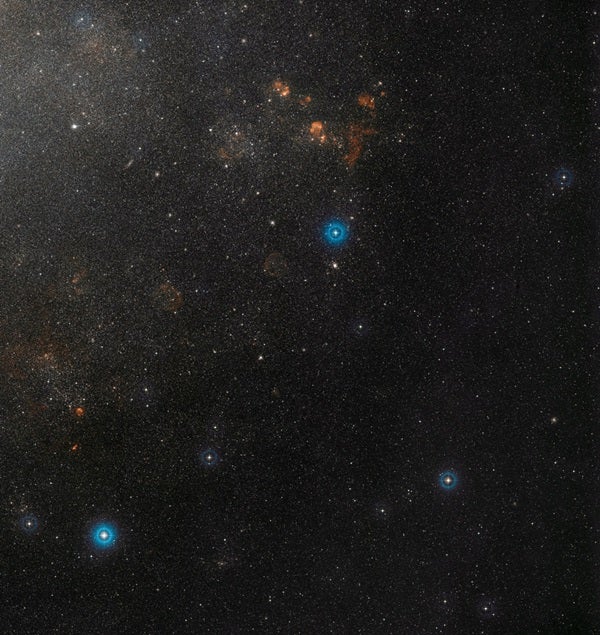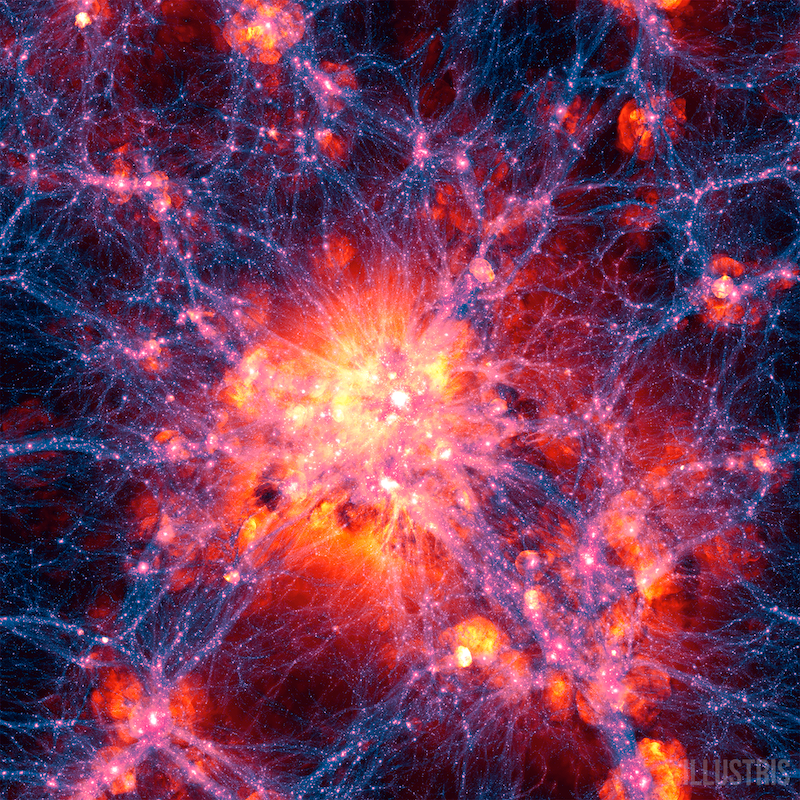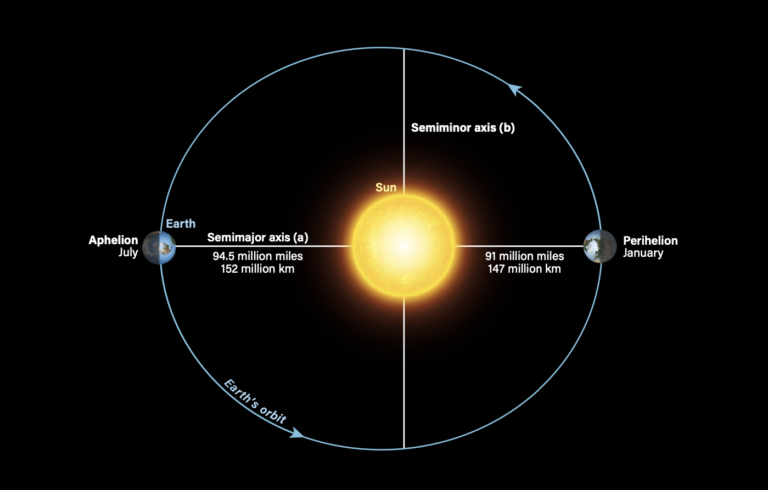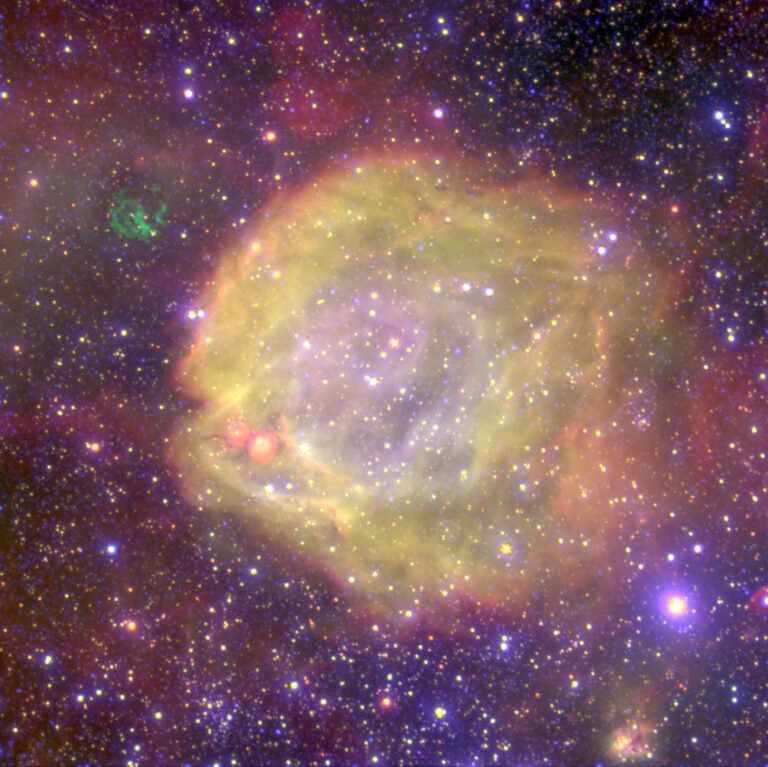“By using the HARPS instrument on the 3.6-meter telescope at the European Southern Observatory’s (ESO) La Silla Observatory in Chile, along with other telescopes, we have measured the mass of a Cepheid with an accuracy far greater than any earlier estimates,” said Grzegorz Pietrzynski from the University of Concepcion in Chile. “This new result allows us to immediately see which of the two competing theories predicting the masses of Cepheids is correct.”
Classical Cepheid Variables, usually referred to as Cepheids, are unstable stars that are larger and brighter than the Sun. They expand and contract in a regular way, taking anywhere from a few days to months to complete the cycle. The time taken to brighten and grow fainter again is longer for stars that are more luminous, and shorter for the dimmer ones. This remarkably precise relationship makes the study of Cepheids one of the most effective ways to measure the distances to nearby galaxies and to map out the scale of the universe.
Unfortunately, despite their importance, Cepheids are not fully understood. Predictions of their masses derived from the theory of pulsating stars are 20-30% less than predictions from the theory of the evolution of stars. This embarrassing discrepancy has been known since the 1960s.
To resolve this mystery, astronomers needed to find a double star containing a Cepheid where the orbit happened to be seen edge-on from Earth. In these cases, known as eclipsing binaries, the brightness of the two stars dims as one component passes in front of the other and again when it passes behind the other star. In such pairs, astronomers can quite accurately determine the masses of the stars. Unfortunately neither Cepheids nor eclipsing binaries are common, so the chance of finding such an unusual pair seemed low. None are known in the Milky Way.
“Very recently, we actually found the double star system we had hoped for among the stars of the Large Magellanic Cloud,” said Wolfgang Gieren, also from the University of Concepcion. “It contains a Cepheid variable star pulsating every 3.8 days. The other star is slightly bigger and cooler, and the two stars orbit each other in 310 days. The true binary nature of the object was immediately confirmed when we observed it with the HARPS spectrograph on La Silla.”
The observers carefully measured the brightness variations of this rare object, known as OGLE-LMC-CEP0227, as the two stars orbited and passed in front of one another. They also used HARPS and other spectrographs to measure the motions of the stars toward and away from Earth — both the orbital motion of both stars and the in-and-out motion of the surface of the Cepheid as it swelled and contracted.
This complete and detailed data allowed the observers to determine the orbital motion, sizes, and masses of the two stars with high accuracy — far surpassing what had been done before for a Cepheid. The mass of the Cepheid is now known to about 1% and agrees exactly with predictions from the theory of stellar pulsation. However, the larger mass predicted by the stellar evolution theory was shown to be significantly in error.
The improved mass estimate is only one outcome of this work, and the team hopes to find other examples of these remarkably useful pairs of stars to exploit the method further. They also believe that from such binary systems they will eventually be able to pin down the distance to the Large Magellanic Cloud to within 1%, which would mean an important improvement of the cosmic distance scale.
“By using the HARPS instrument on the 3.6-meter telescope at the European Southern Observatory’s (ESO) La Silla Observatory in Chile, along with other telescopes, we have measured the mass of a Cepheid with an accuracy far greater than any earlier estimates,” said Grzegorz Pietrzynski from the University of Concepcion in Chile. “This new result allows us to immediately see which of the two competing theories predicting the masses of Cepheids is correct.”
Classical Cepheid Variables, usually referred to as Cepheids, are unstable stars that are larger and brighter than the Sun. They expand and contract in a regular way, taking anywhere from a few days to months to complete the cycle. The time taken to brighten and grow fainter again is longer for stars that are more luminous, and shorter for the dimmer ones. This remarkably precise relationship makes the study of Cepheids one of the most effective ways to measure the distances to nearby galaxies and to map out the scale of the universe.
Unfortunately, despite their importance, Cepheids are not fully understood. Predictions of their masses derived from the theory of pulsating stars are 20-30% less than predictions from the theory of the evolution of stars. This embarrassing discrepancy has been known since the 1960s.
To resolve this mystery, astronomers needed to find a double star containing a Cepheid where the orbit happened to be seen edge-on from Earth. In these cases, known as eclipsing binaries, the brightness of the two stars dims as one component passes in front of the other and again when it passes behind the other star. In such pairs, astronomers can quite accurately determine the masses of the stars. Unfortunately neither Cepheids nor eclipsing binaries are common, so the chance of finding such an unusual pair seemed low. None are known in the Milky Way.
“Very recently, we actually found the double star system we had hoped for among the stars of the Large Magellanic Cloud,” said Wolfgang Gieren, also from the University of Concepcion. “It contains a Cepheid variable star pulsating every 3.8 days. The other star is slightly bigger and cooler, and the two stars orbit each other in 310 days. The true binary nature of the object was immediately confirmed when we observed it with the HARPS spectrograph on La Silla.”
The observers carefully measured the brightness variations of this rare object, known as OGLE-LMC-CEP0227, as the two stars orbited and passed in front of one another. They also used HARPS and other spectrographs to measure the motions of the stars toward and away from Earth — both the orbital motion of both stars and the in-and-out motion of the surface of the Cepheid as it swelled and contracted.
This complete and detailed data allowed the observers to determine the orbital motion, sizes, and masses of the two stars with high accuracy — far surpassing what had been done before for a Cepheid. The mass of the Cepheid is now known to about 1% and agrees exactly with predictions from the theory of stellar pulsation. However, the larger mass predicted by the stellar evolution theory was shown to be significantly in error.
The improved mass estimate is only one outcome of this work, and the team hopes to find other examples of these remarkably useful pairs of stars to exploit the method further. They also believe that from such binary systems they will eventually be able to pin down the distance to the Large Magellanic Cloud to within 1%, which would mean an important improvement of the cosmic distance scale.










